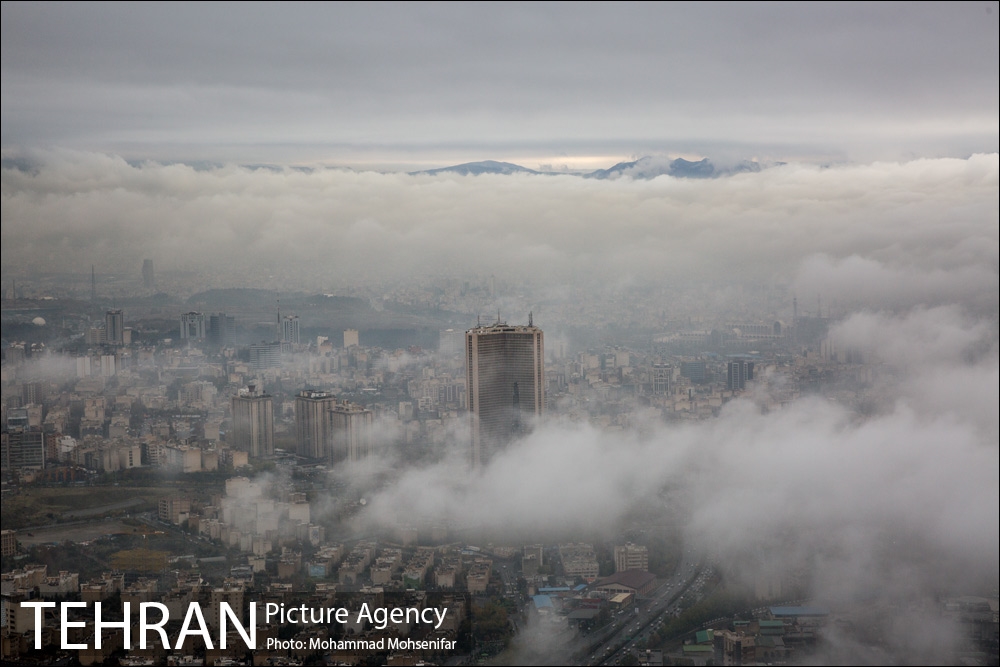Tehran Province has called for revising the current system of allocating provincial budget, so that factors like the provinces' population and living costs are taken into account.
"Tehran Province accounts for more than half of the government's tax revenues, this is while barely 2.5% of the sum are spent on the province as budgetary resources," Gholamreza Abbas Pasha, the deputy governor of Tehran Province, was quoted as saying by IRNA.
"We believe that Tehran Province's budget should be addressed at the national level, because it is providing services to the whole country."
Pasha noted that the province accounts for 18% of Iran's population and will make significant progress in development projects and infrastructures, if budgetary funds are distributed proportionately.
Tehran Province is expected to earn 1,000 trillion rials ($3.62 billion) of the total 1,800 trillion rials ($6.5 billion) of tax revenues projected for the current fiscal year (March 2020-21).
By materializing 106% of tax revenues set in last fiscal year’s budget, Tehran Province accounted for 56% of the country’s 1,410 trillion rials [$5.11 billion] tax income.
This is while the government has set Tehran Province’s expenditure at 9,440 billion rials ($34.26 million) for the current fiscal year (March 2020-21).
By materializing 106% of tax revenues set in last fiscal year’s budget, Tehran Province accounted for 56% of the country’s 1,410 trillion rials [$5.11 billion] tax income.
"Residents have the right to receive funds in accordance with their contribution [to the government's revenues]," Pasha said.
According to Shahram Edalati, the deputy head of Tehran's Plan and Budget Organization, the province has received nearly 60% of the funds set in the current fiscal year.
Amid financial constraints, the government is counting on tax as a major source of revenue.
"The fact is that much of the province's problems have been tackled with the help of private sector investors,” Pasha said.
Attracting private investments should be considered an achievement for Tehran Province officials. Other developing countries have shown that successful cities require indigenous and private capital accumulation centered on a potentially competitive industry.

Tehran Accounts for One-Fifth of Iran’s GDP
Tehran Province accounted for 22.1% or more than one-fifth of Iran’s gross domestic product in the fiscal 2019-20.
The value of Tehran’s output stood at 7,400 trillion rials ($26.8 billion) in the last fiscal year to grab the lion’s share of Iran's GDP.
Real estate was the most productive economic sector in Tehran, accounting for one-fifth of the province’s GDP.
The industrial sector accounted for 15.1% of Tehran’s total production.
According to a report by the Persian economic daily Donya-e-Eqtesad, citing the Statistical Center of Iran, Khuzestan was the second biggest economy among Iranian provinces during the period under review, as it made up 14.8% of Iran's GDP, despite a 1.6% decrease it registered compared with the year before.
Tehran and Khuzestan constituted more than one-third of Iran's production in the fiscal 2019-20.
Tehran, Khuzestan, Bushehr, Isfahan, Khorasan Razavi, Fars, East Azarbaijan, Mazandaran, Alborz and Kerman provinces accounted for more than 70% of Iran’s total GDP in the year ending March 2020.
North Khorasan and South Khorasan had the smallest share of 1% combined in Iran’s GDP.
As the biggest economy, Tehran’s share in GDP is 50 times bigger than South Khorasan's, Iran’s smallest economy.
Following is the shares of all Iranian provinces in Iran's GDP. Markazi with 1.9%, Gilan with 2.2%, Mazandaran with 3.3%, East Azarbaijan with 3.5%, West Azarbaijan with 2%, Kermanshah with 1.5%, Fars with 4.7%, Khuzestan with 14.8%, Kerman with 3.1%, Khorasan Razavi with 4.9%, Isfahan with 5.8%, Sistan-Baluchestan with 1.4%, Kurdestan with 0.9%, Hamedan with 1.2%, Chaharmahal-Bakhtiari with 0.6%, Lorestan with 1.1%, Ilam with 1.2%, Kohgilouyeh-Boyerahmad with 2.2%, Bushehr with 6%, Zanjan with 1%, Semnan with 0.9%, Yazd with 1.8%, Hormozgan with 2%, Tehran with 22.1%, Ardabil with 1%, Qom with 1%, Qazvin with 1.5%, Golestan with 1.2%, North Khorasan with 0.5%, South Khorasan with 0.5% and Alborz with 2.8%.


